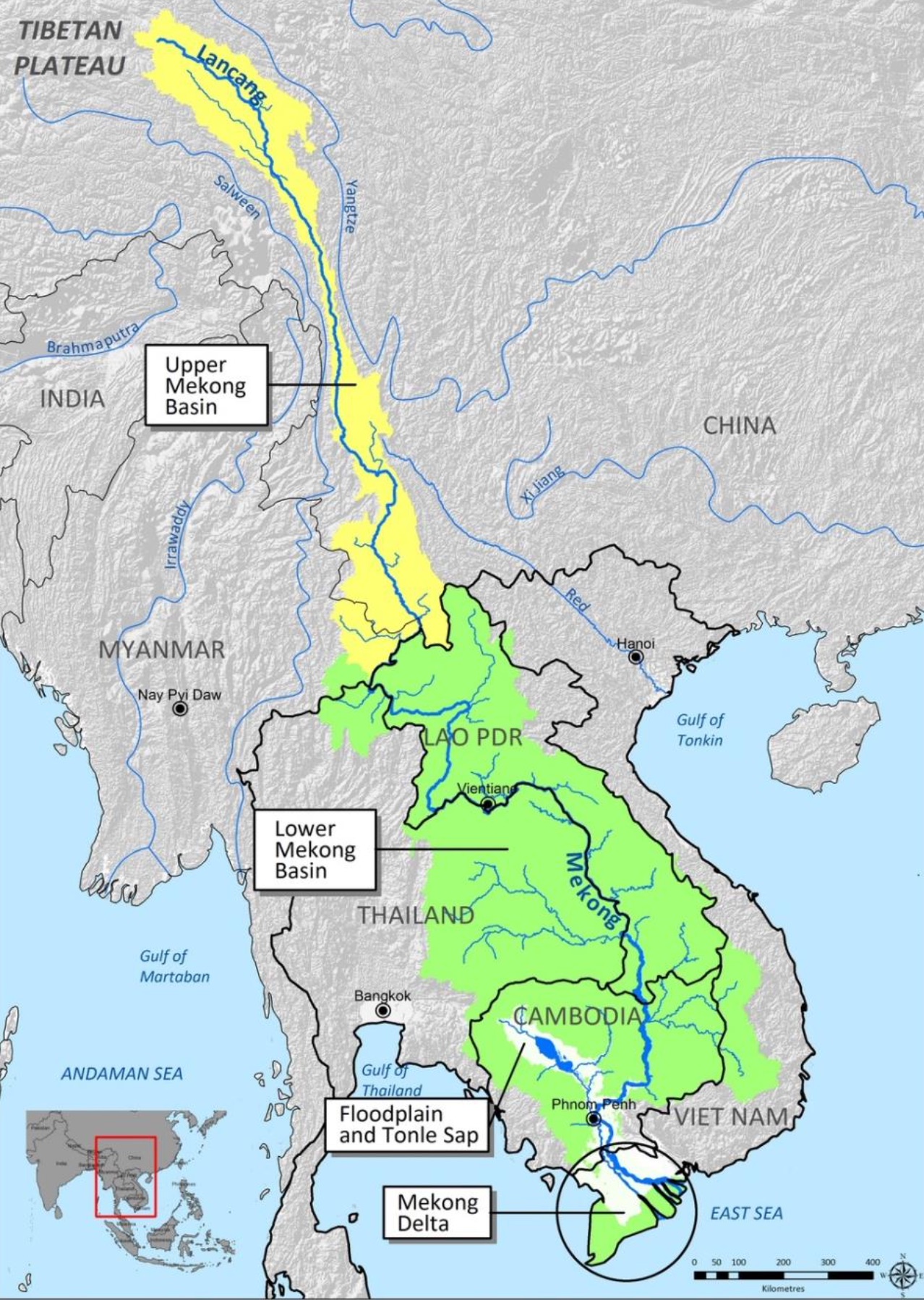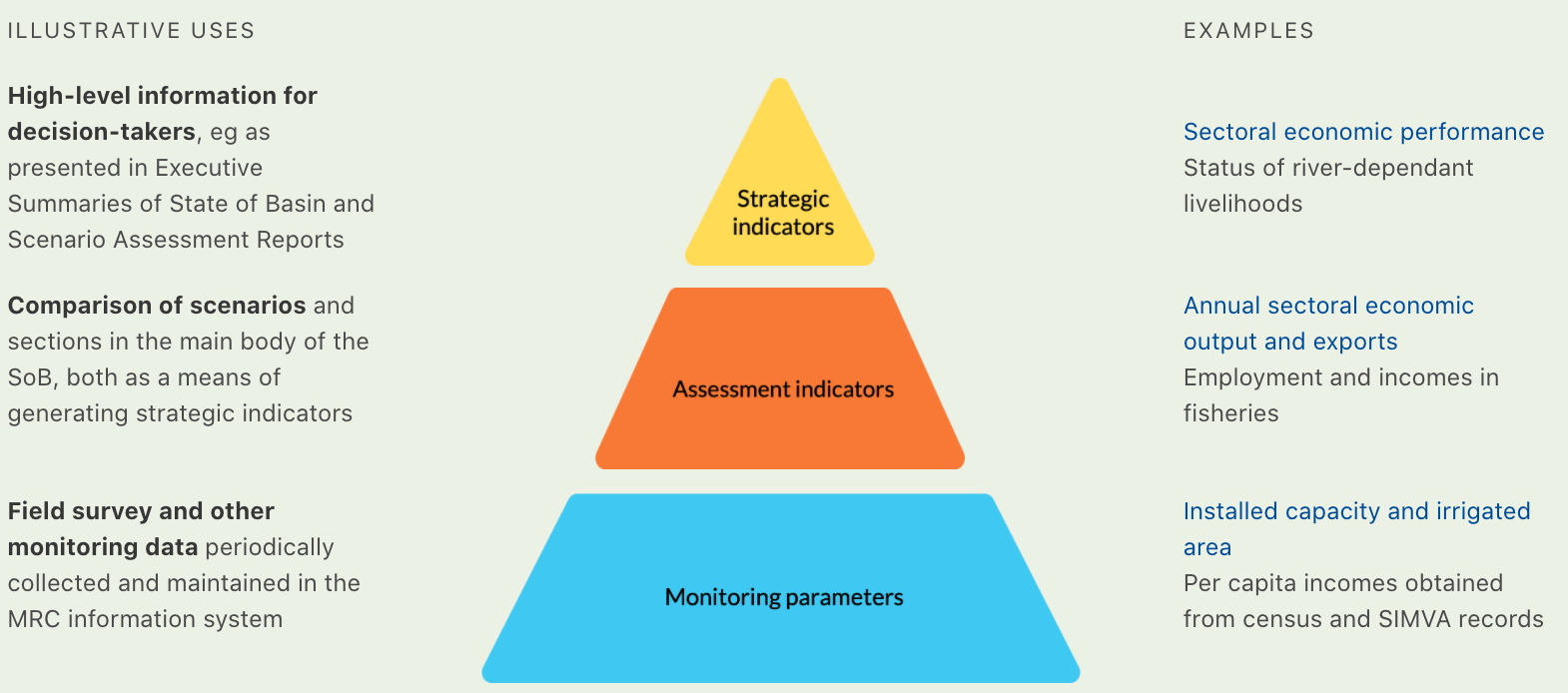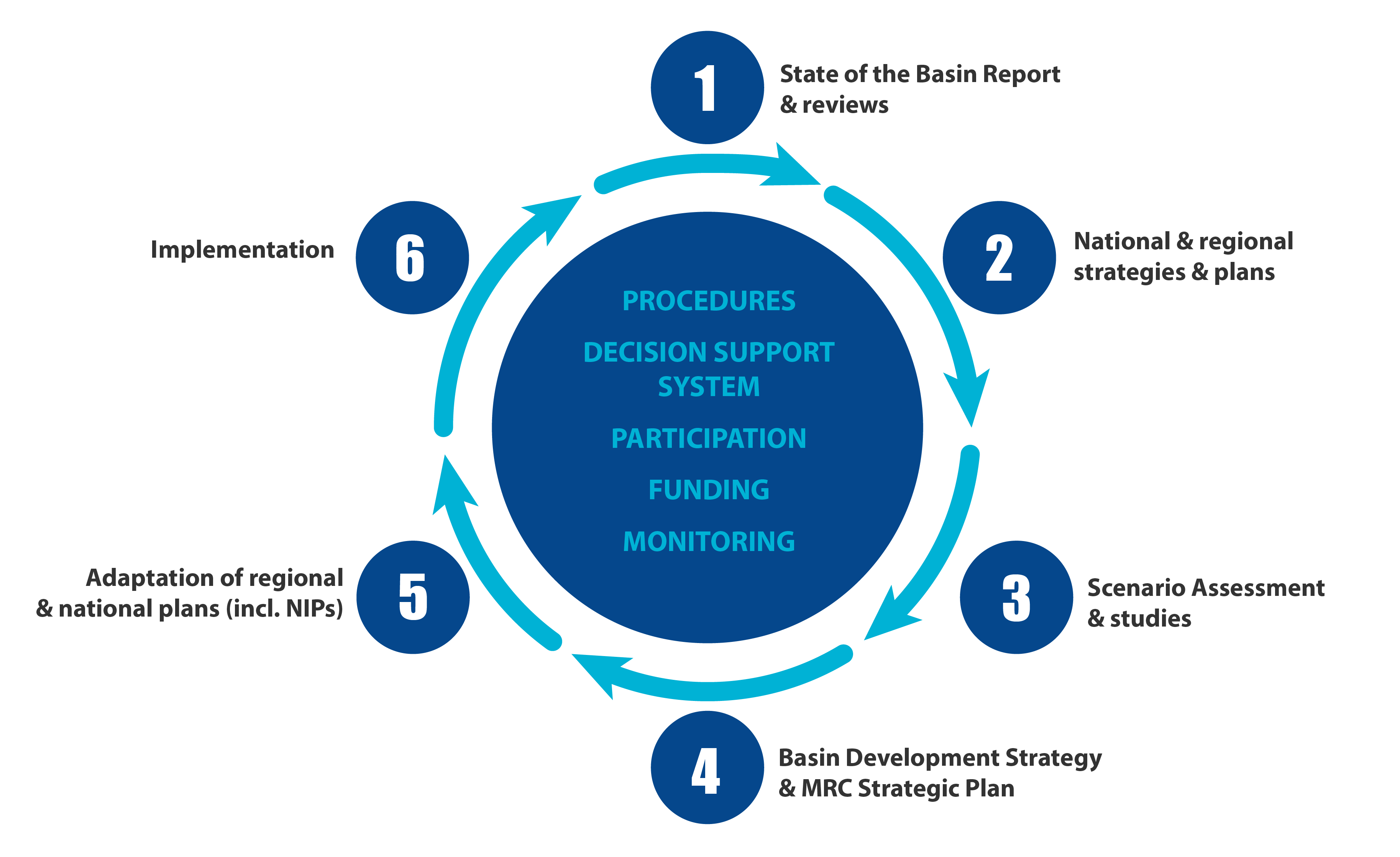Introduction
Purpose and scope of the State of the Basin Report
The MRC State of the Basin Report (SOBR) aims to provide an overall picture of the state of the Mekong Basin in terms of its ecological health, the social and economic circumstances of its people, and the degree to which cooperation between riparian countries envisaged under the 1995 Mekong Agreement is enhancing these conditions. In accordance with the Basin Development Strategy 2016-2020, the SOBR forms an integral part of the MRC’s strategic planning cycle, which normally covers a five-year period. In this role, the SOBR is intended to reflect on the aims and commitments of the 1995 Mekong Agreement, to determine progress towards achieving these aims, and to identify issues that the Member Countries need to consider when updating the Basin Development Strategy for the next planning cycle. The SOBR also seeks to highlight significant issues as well as apparent development opportunities that the Member Countries may wish to take up. Further studies, such as scenario assessments as were undertaken in 2010 and more recently under the Council Study, are likely to be needed to determine how to address the issues and opportunities raised in the SOBR. In contrast to earlier versions of the SOBR published in 2003 and 2010, the 2018 SOBR and future SOBRs are to be structured around a set of indicators, referred to as the Mekong River Basin Indicator Framework. The framework comprises a hierarchy of water-related strategic and assessment indicators supported by monitoring parameters, all of which are intended to provide a full and integrated picture of how the cooperation between countries through the MRC is benefiting and impacting on the basin and each Member Country.
In summary, this report summarizes the broader developments in the Mekong region and tracks and evaluates trends indicated by the Indicator Framework. It is a technical report that can be used for a range of general and specific purposes:
- To inform a broad audience on the social, environmental, climate change, economic and cooperation status and trends in the Mekong Basin;
- To record and evaluate the positive and negative development impacts in the Mekong Basin as a way to measure the effectiveness of Basin Development Strategy implementation;
- To highlight the emerging development opportunities and issues which could be explored through scenario assessment or which need to be addressed in the next update of the Basin Development Strategy;
- To provide decision makers with concise and relevant information to determine the outcomes of basin- wide cooperation; and
- To provide information on how well MRC achieves its vision of “an economically prosperous, socially just and environmentally sound Mekong River Basin”.

The Indicator Framework
In 2014-2015 the MRCS, under coordination of the Basin Development Plan (BDP) Programme, developed a common indicator framework for monitoring, assessment, and reporting on the state of the basin. The Indicator Framework comprises a hierarchy of water-related strategic and assessment indicators supported by monitoring parameters. The SOBR follows this structure and seeks to quantify and/or provide commentary on each of the strategic and assessment indicators.

At the highest level, the MRC Indicator Framework is structured around five dimensions: environment, social, economic, climate change, and cooperation, within which 15 strategic indicators have been agreed by the Member Countries to provide policy-level decision makers with a concise information relating to the development and management conditions within the basin.
At the second level, 55 assessment indicators were selected to provide more detailed information and to support the quantification of the strategic indicators.
At the lowest level, approximately 160 monitoring parameters were identified to support the quantification of the assessment and strategic indicators for this SOBR.
These strategic indicators are summarized using a traffic light inspired colour scheme, using the following status levels:
The conclusion and recommendations page does use this traffic light inspired colour scheme to summarise the current status of strategic indicators.
The MRC planning cycle
The MRC’s planning cycle has evolved over time to meet the organisation’s needs as reflected in the various commitments in the 1995 Mekong Agreement, including the commitment to promote optimal and sustainable development equitably within the basin. The six main steps in the cycle are as follows:

Disclaimer
This publication is based on the Mekong State of the Basin Report 2018. The State of the Basin Report (SOBR) was prepared by Mekong River Commission Secretariat (MRCS) through an extensive consultation process with experts and representatives of the Member Countries and interested stakeholders. The contents, data, findings, and recommendations serve as a comprehensive knowledge base for the MRC Member Countries and other key stakeholders to discuss and determine appropriate actions by which to realise the MRC’s aim of promoting the sustainable management and development of the basin.
The figures in the SOBR presented here should be interpreted in consideration of the assumptions, methodologies, and data sources used in the Report. The SORB is an indicator based report based on the Mekong Basin Indicator Framework, which is a tool that provides a consistent and comprehensive set of indicators for overview of conditions in the Mekong Basin.
In addition, for the first time, the report also includes review of conditions, based on available official data as well as credible secondary sources, in the Upper Mekong Basin (UMB) in China and Myanmar to better understand the dynamics of change and the implications for planning and implementation in the Lower Mekong Basin.
The MRC is funded by contributions from its Member Countries and Development Partners: Australia, Belgium, the European Union, Finland, France, Germany, Japan, Luxembourg, the Netherlands, Sweden, Switzerland, the United States of America, and the World Bank.